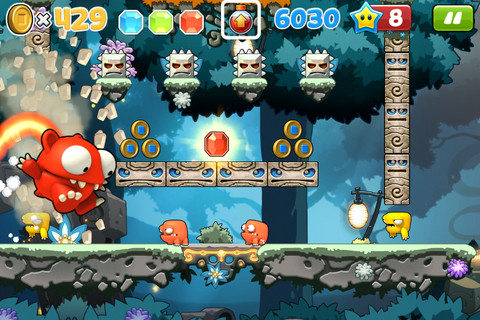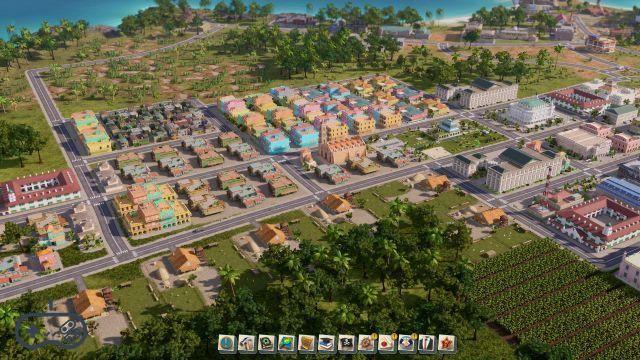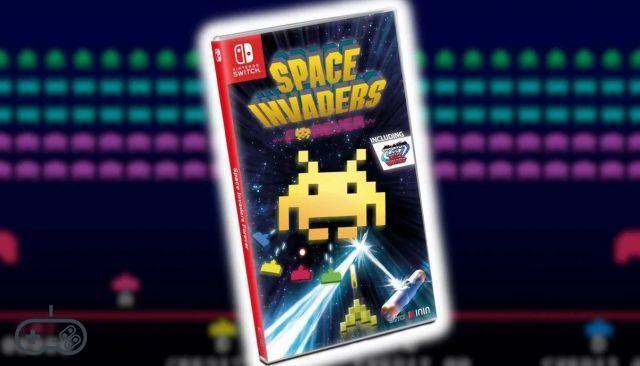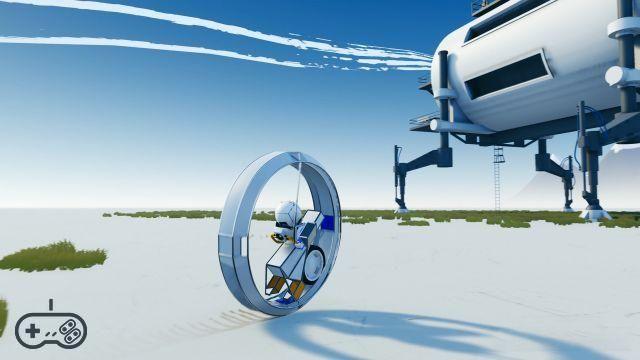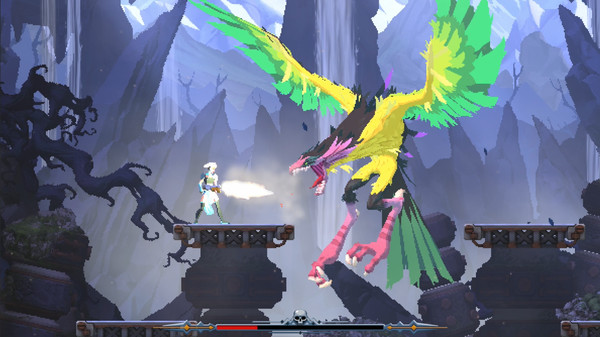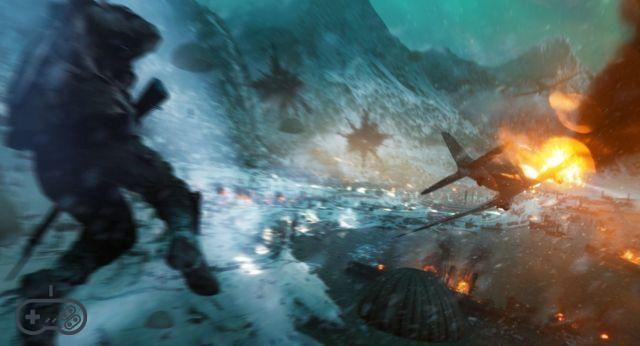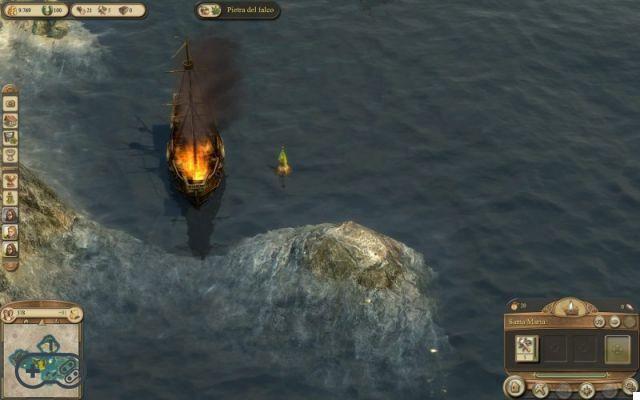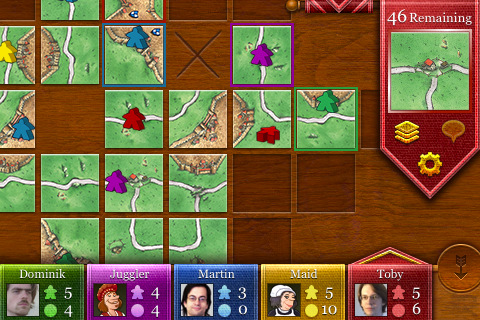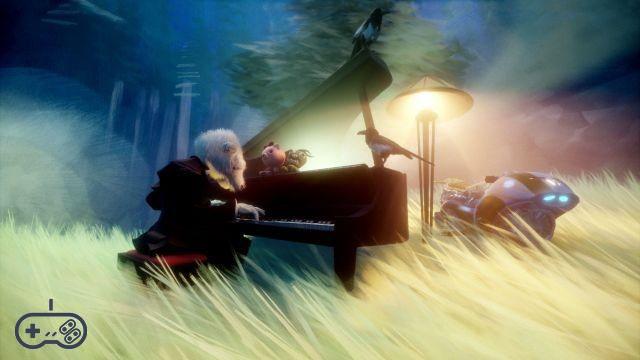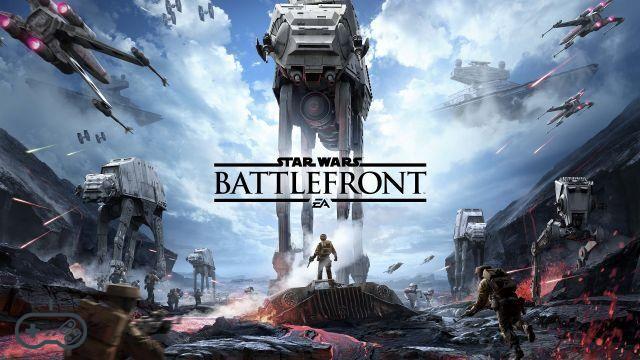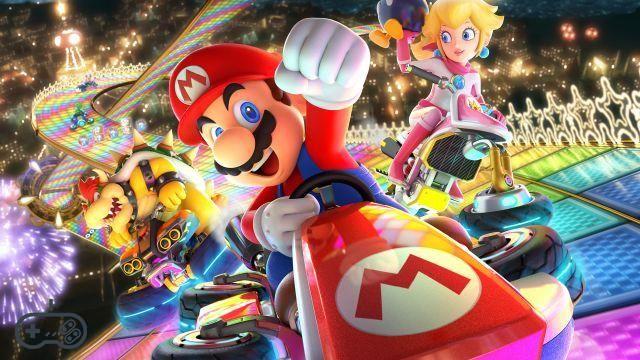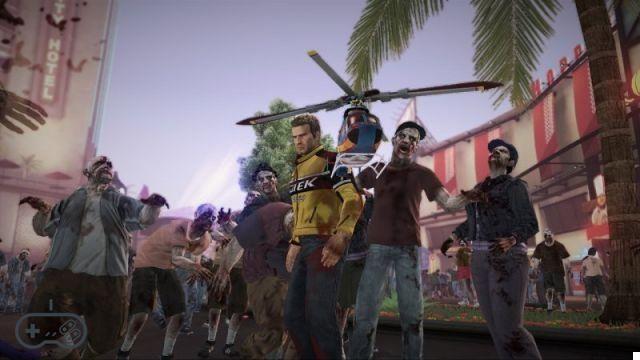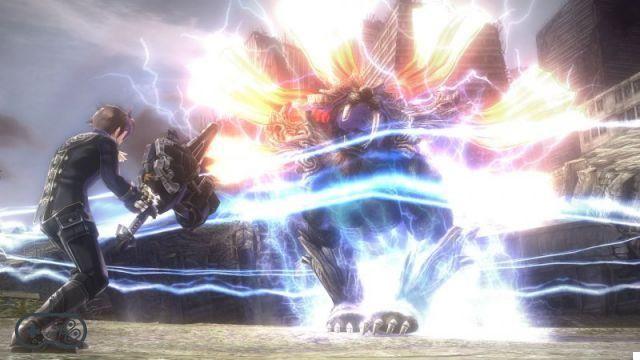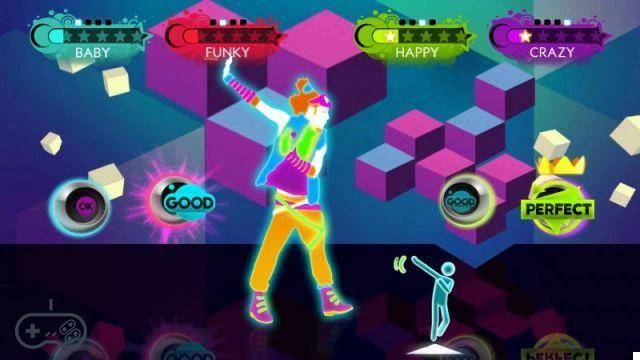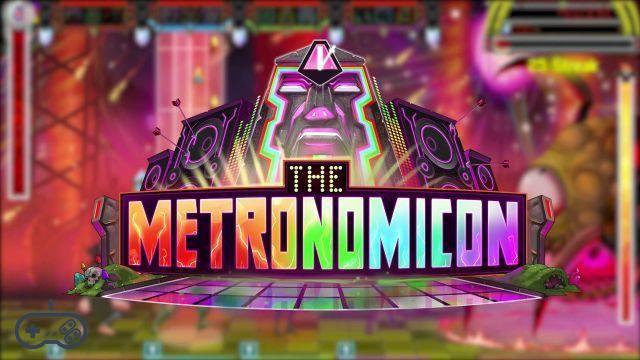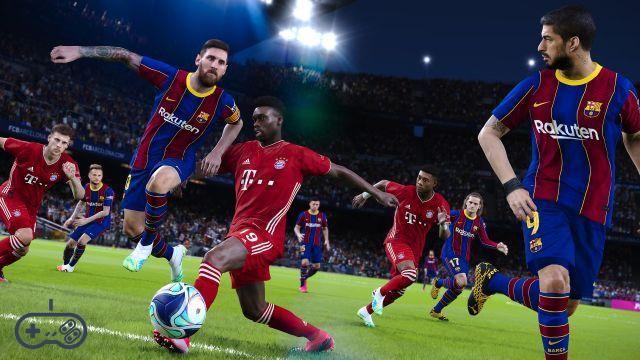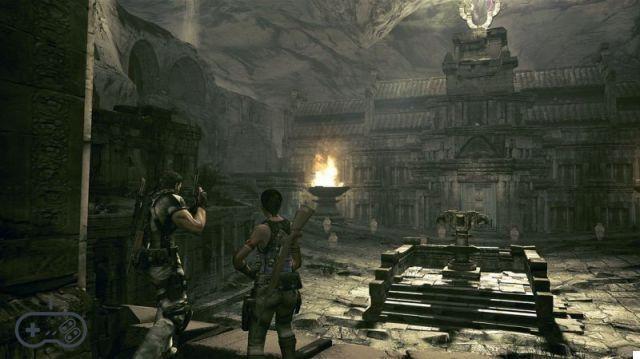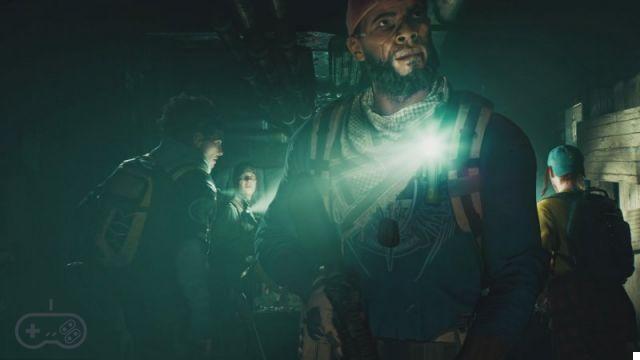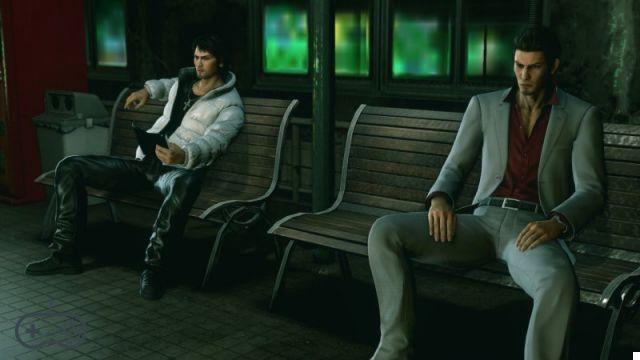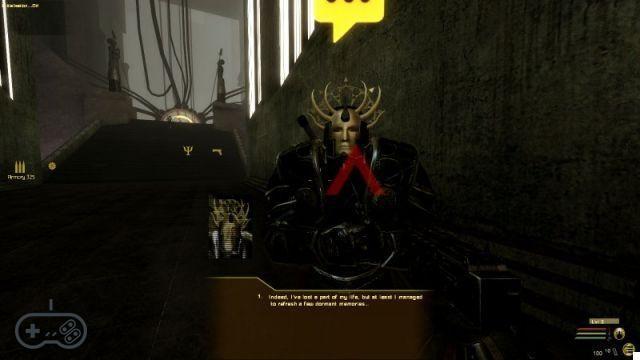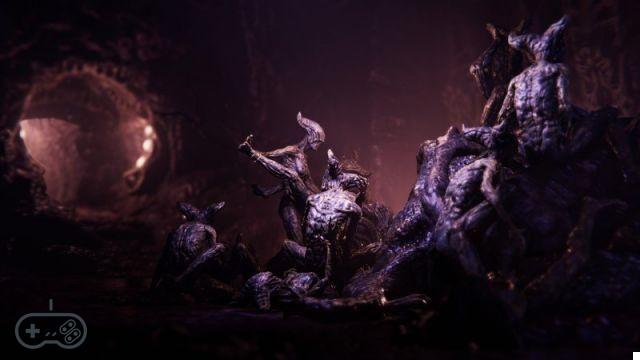This latest episode of The Legend of Zelda is the largest and most expensive game in Nintendo history: it was developed for five years (from 2012 to 2016) and required, at the peak of the work, the commitment of about three hundred people, some of which among other things - as you may know - coming from Monolith Soft (Xenoblade X Chronicles). To find an equally ambitious project by the Kyotese company, it is necessary to go back in time by almost two decades; some of you might mention Super Mario Galaxy but, apart from the fact that it was sculpted at the Tokyo headquarters (but we are not interested in this), the interplanetary adventure of the plumber, however experimental and extraordinary, represented a fine excellence to itself.
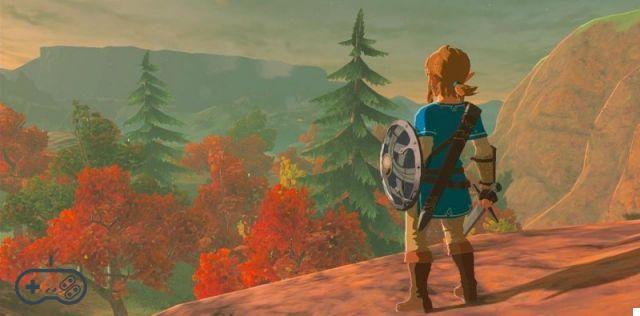
On the contrary, Breath of the Wild has taken charge not only of his own destiny, but of that of EPD as a whole: the enormous time required for the development of a new engine, including an advanced physics engine, will be rewarded by sharing these elements with other titles developed internally. To give you an example, the last big update in this sense dates back to the days of Super Mario Sunshine and Wind Waker, which, however, taken individually, were certainly not as ambitious as Breath of the Wild. The last game to combine high "personal" and corporate objectives was Ocarina of Time - or, if you prefer, Super Mario 64. If this is not enough to make the context interesting enough, we remind you that the series of The Legend of Zelda , despite never having received negative evaluations, arrives at this crucial point after a series of chapters that have caused discussion: for the setting, for the realization, although they were now distant from the essence of the series, from that exploration, from that difficulty and that sense of progression that had captivated millions of players. In short words, to use a poker term, Nintendo went "all-in" with this title: the only possible move to preserve the sacredness of the saga, which has been progressively scratched over the last decade.
Breath of the Wild is an exceptional experience, taking the series into the future by drawing inspiration from the past
Climb, burn and roll
As soon as the adventure begins, there are two elements that immediately catch the attention: first of all the absence of the execrable and talkative guided start that has plagued the last two episodes of the series. In Breath of the Wild, after a very short introductory video, you immediately take control of Link (by the way, due to the dubbing this time you will not be able to rename him at will). The second striking aspect is the interaction, essentially composed of the varied and precise control system, the enormous freedom granted and the valid physical engine, three excellent qualities taken individually which, added together, give a truly surprising sensation.
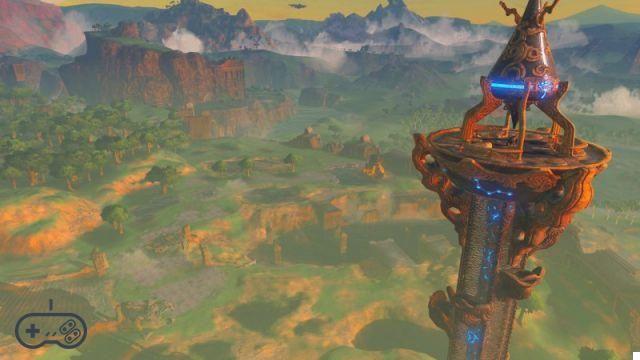
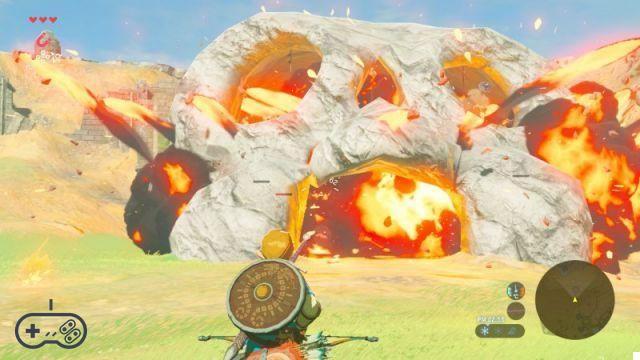
Link is one with this world, and the latter can be experienced in all its parts: there is no peak or height that cannot be reached, there is no difference in height or rock that does not alter the movement of the character. In this area, and only in this area, Breath of the Wild is the authentic spiritual sequel to Super Mario 64: the freedom it gives is extraordinary. Each wall is scalable, and it is until Link runs out of his fatigue bar, which of course can be upgraded during the adventure. The attention to detail is maniacal, but we want to be clear: this is not a painstaking and claustrophobic compilation in the Skyward Sword style, but a precious care of single elements that, rather than limit them, expand the variables. Let's give you a practical example, introducing first another element, namely the changing weather and storm conditions: 60 seconds in reality corresponds to 60 minutes in the game, so a whole day lasts twenty-four minutes, and the weather conditions, excluding particular areas, are always changing and random. We know that imagining all these qualities added together is not easy, so we will tell you an episode to make you understand how, combined together, they are able to originate something unique. A few days ago we were exploring a mountainous area, clearly rocky, during a thunderstorm. The water flowed hard, and so Link was unable to climb as fast as usual: as the surface was slippery, he often tended to lose his grip and return to the bottom. This being the case, to continue the journey we had to look for small winding paths that would allow us to continue our ascent despite the rain. After advancing a bit, we reached a part of land that was richer in trees, and at that point, to make matters worse, lightning strikes arrived: the woods, notoriously, are not the safest place during a storm. We didn't have time to take cover: a bolt hit a shrub in front of us, the tree with the bump broke, and its trunk began to roll downwards following the slope of the ground. Having been electrocuted it caught fire, and therefore caused a fire starting colliding with the turf: however, luckily for us, everything was soon sedated by the incessant water falling from the sky. Here, this is just an episode. Breath of the Wild guarantees a variety of experience, and a quality in variety that is simply exceptional: None of us will play the same adventure, nor face the same dangers at the same time.
Combat and equipment
The biggest surprise of this The Legend of Zelda is certainly the level of difficulty: the demos before the release had prepared us for the type of experience it would offer, but did not let us imagine that it would be so difficult. Yes, you read that correctly: after years we have again a really challenging chapter of the saga, so difficult that not only Skyward Sword, but even Ocarina of Time, is quite easy. The only equally difficult predecessor is precisely the progenitor to which it is openly inspired, or the first The Legend of Zelda.
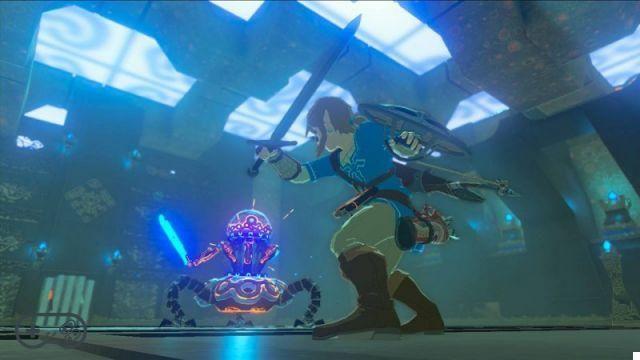
The crudeness of the fights is mainly determined by two factors, namely the character's equipment, which is often unsuitable for the situation, and the strength (and number) of the enemies. The latter vary a lot in approaches and behaviors, they tend to collaborate with each other based on different degrees of intelligence, and above all - interesting news only for fans of the saga - they finally attack all together, not alternating in the duel. The resulting situation of instability and precariousness generates ancient sensations, long dormant in The Legend of Zelda: some enemies can kill you with a single shot, others hunt you and are faster than you, still others hunt in groups (beautiful in this sense the reconstruction of the packs of wolves). In general, the balance between the two elements that we have listed above is fundamental: with adequate equipment you can approach fights otherwise difficult, while with a poor inventory you risk succumbing even with a group of scarce enemies. Overall, people die a lot, and sometimes the situation can touch frustration: exaggeration has been curbed by punishing deaths very little, because Link always starts from nearby areas, and we assure you that you will be grateful for this choice. In this regard, automatic saves are frequent, and it is possible - with rare exceptions - also to implement them manually. Returning for a moment to the equipment, it is good to point out how the dreaded perishable weapons are necessary in terms of game design: it is they who push you to fight enemies - and risk your life - rather than avoid them, so as to be able to steal them, they are they give dynamism to the action and generate that constant sense of danger and the need for survival.
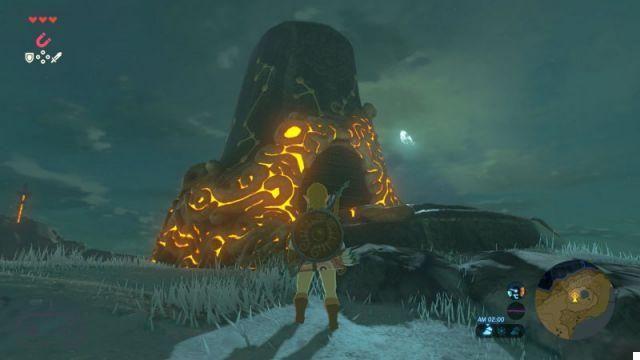
Not only the initial weapons break, but also the most powerful ones. There are many tools to attack: swords, spears, hammers and more. Each of them is useful from the first approach, each needs a learning period to be fully understood, each has different pros and cons (the strongest tools tend not to include the simultaneous use of the shield). The fights require a lot of attention and quick reflexes: the same clashes with the most significant enemies are no longer focused on discovering the weak point (not only, at least) but above all, and finally, on the action. By dodging shots at the right moment, Link has the ability to counterattack in slow motion, which is useful but - fortunately - rare. The use of the bow as an offensive tool is more important than in the past, and it is extremely pleasant and dynamic to use (it is activated with ZR). Here too, the various bows imply different approaches to fighting: some give more power, others improve the aim (by enlarging the target). Link's equipment is composed not only of weapons, bows and shields, but also of other elements that, unlike the first three, are not perishable: shirts, cloaks and hoods, pants and boots. It is essential never to be left with a few tools: in addition to killing enemies, weapons and clothes can be obtained in shops, to be purchased with the canonical rupees, but this time they are not obtained by cutting the grass, but by selling the materials earned by killing monsters.
The nature of Hyrule
And here we are at the most important section of this work: the game world, the land of Hyrule. Let's start with the details: Link is not only able to run like in Skyward Sword - with the motion dependent on the aforementioned fatigue bar - but also to jump. The jump, which has always been automatic in Link's three-dimensional adventures, is used to "free" the action key (which now no longer serves to climb on objects) and to reach certain elevated areas, but still remains a secondary act in the game's economyThis is demonstrated by the fact that the height of the jump is not blurred in relation to the intensity of the pressure.
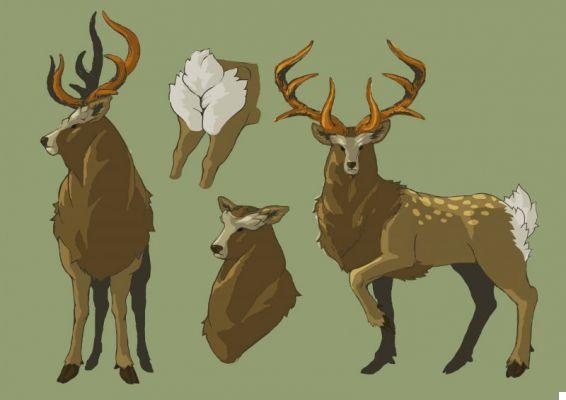
On the other hand, an important action is revealed if combined with the opening of the paraglider, an instrument that allows you to glide around the world (it also consumes the fatigue bar), which will give you a great feeling of freedom, especially if operated by the top of a mountain. As usual, Link's vital energy is indicated by a series of hearts, but in this case, in addition to dropping more often than the norm, recharging them will not be immediate or simple. Just like the character's equipment, food, which serves to restore health, also requires time and preparation: in general, every trip and every destination in this game requires a minimum of weighting, throwing yourself into the fray is fun but usually fruitless and, indeed, counterproductive. You can eat berries, fruit, meat and fish, but the best is obtained by cooking and mixing the individual ingredients: in certain situations it is essential to prepare well to face the next goal worthily. It is possible to hunt, of course: once an animal is killed, it immediately becomes edible meat, without any suffering or suffering being shown. The representation of the fauna is however masterful, and perhaps constitutes the decorative, and intrinsically narrative, element more valid than Breath of the Wild: there are about ninety species of animals, and all are cared for in their movements, attitudes and behaviors, from horses to wolves, from dogs to bulls, from foxes to squirrels, from deer to ibex.
Exploration and progression
So far we have talked to you about some excellences of Breath of the Wild, as well as certain elements of break with the recent canons of the series, but there is nothing, really nothing, that distances this world from the previous ones as the exploration of Hyrule. Once you have finished the introduction, which lasts approximately four hours, you can go anywhere. The objective designated by the main mission is signaled, but no one forbids you to go elsewhere and, even if you decide to fulfill your task immediately, you will surely find yourself in situations that are inadequate for your equipment. The feeling of loss and smallness is devastating: as soon as you leave the initial area you will feel weak and helpless, totally unprepared for what awaits you. And precisely this impression is fundamental to understand the progression in Breath of the Wild, because in fact it coincides with the increase in knowledge, and understanding, of a territory.
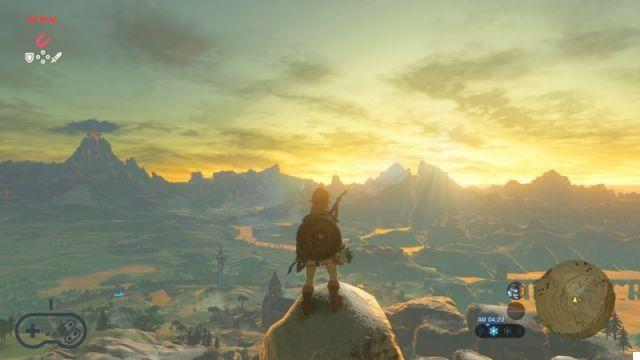
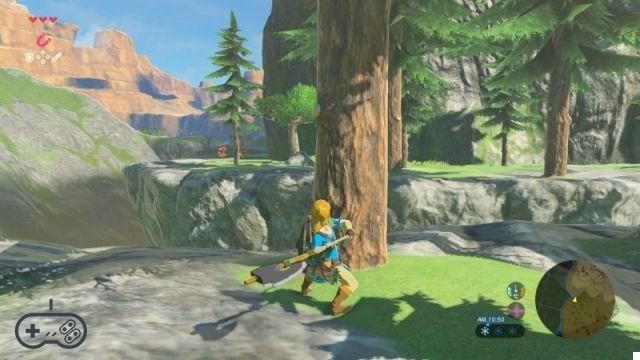
Every region of this huge world, none excluded, has safer and more inaccessible routes: one must learn to know them through experience, exploring and dying, escaping and fighting. However, we would like to make you understand how appreciable and anomalous this approach is: even in the presence of a radar (used, and in a generic way, only for the main quest) it is essential to study the surrounding environment, to understand how to achieve one's goals. This gradual understanding of Hyrule, which repeats itself every time a new region is approached and which proceeds naturally from the outside in, is perhaps the greatest asset - in terms of game design - of the game. You have to plan the trip, take precautions and equip yourself, but above all study, observe with Link's eyes and with your own what surrounds us: the same non-player characters, more numerous than expected, never give you a simple point to follow on the map (they don't give it to you at all, to be clear), but they give you descriptive information that respects the morphology of the world (such as, for example, "cross the pass between those two mountains and then ask the man who lives on the hill on the left, he will be able to help you "... completely realistic indications, in short). You will find the inhabitants of Hyrule both around, in particular traders and adventurers, and in the villages, where you can stay in peace - more unique than rare - and exchange a few words to undertake the secondary missions. The latter are numerous, and made even more complicated by the absence of signs on the map, a facility to which the open worlds had now accustomed us. A final consideration on the means of locomotion: the easiest and fastest is of course the teleportation, but it is accessible only after having performed certain actions on each region. As an alternative to his feet, Link can rely on horses, this time captured by savages and subsequently tamed: each of them has different statistics and potentials, but all of them can be registered at the stables (which in this game basically act as inns), and above all they are united. from the quality of the animations and the interaction with the surrounding world. To conclude the speech, we enunciate an element that constitutes one of the few defects of the game: the world of Hyrule is vast and rich in contents, but often it is quantitatively lacking in decorations, especially with regard to shrubs and vegetation. It must be added that almost every tree is scalable and cuttable, so the choice is partially justified, the fact remains that the glance - in this area - is inferior to most western open worlds.
Points of interest, puzzles and dungeons
What we have said so far glorifies the transition between one point of interest and another, which has always been the historical and constant lack of recent open worlds. But, having arrived precisely at a focal area, it is necessary to underline how rich the gaming experience is, even in this case: in the previous The Legend of Zelda the adventure underwent a procedural centralization towards the sublimation of the game design of a area, represented by a dungeon. Here, however, even in this circumstance, the adventure turns out to be surprisingly varied both in the objectives and in the solution of the same.
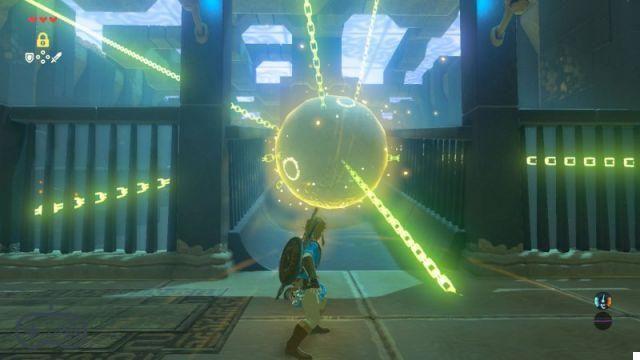
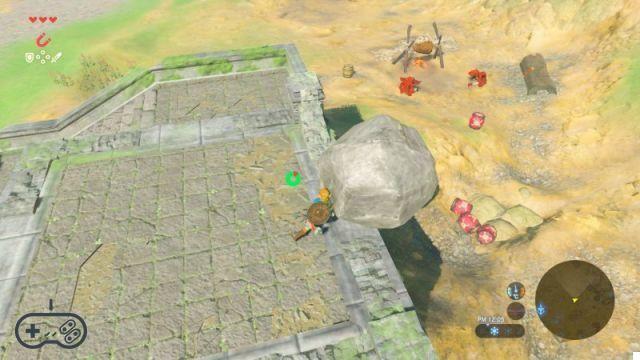
The action and the apogee of playful architecture are not limited to a limited area, but unfold in the entire area concerned: without going into details, each region offers numerous interpretations, and different approaches to the "conquest" of the territorial section . In this context, trying not to anticipate anything concrete, we limit ourselves to listing the high quality of the puzzles included. Enigmas that, as expected, are not exclusive to a single setting, but extend to the entire Hyrule: all this is made possible by the previously enumerated merits, that is the depth of the physical engine and the randomness of the experience. The title is full of environmental puzzles, and wanting to cite a well-known example from the E3 demo, we name the shrubs that, uprooted from the original location, manage to build a bridge capable of making you cross an otherwise impassable river. (in this regard, the temperature indicator should be emphasized, a feature so obvious that one wonders why no one has introduced it before). Although the whole map is full of similar situations, and although each puzzle has many possible solutions, it is undeniable that the sublimation of the same, also in this case and faithfully to the traditions, takes place inside the dungeons and mini-dungeons. Breath of the Wild offers interesting and atypical puzzles, which exploit the depth of the physics engine and the interaction with the environment, both in the already advertised shrines, brilliant and detached from the geographical context of Hyrule, and in the dungeons, complex and branched and surprising , on which, for reasons of mere spoiler, we do not dare to dwell further. We limit ourselves to reiterating the importance of the powers conferred by the Sheika Slate, the tablet carried by Link, which is not only exalted by the shrines (and labyrinths and dungeons), but is wisely exploited, although never abused, even in the overworld. These are talents of technological extraction that allow, in a creative and free way, to freeze liquids, to transport metals, to drop laser bombs, spherical or cubic, according to the needs dictated by the soil. To conclude the discussion of the eminently playful components, we again underline how vast and difficult the game is, and therefore long and demanding: even aiming to complete the main mission alone, you will hardly be able to get away with less than forty-five hours.
Graphics, music and dubbing
We have not deliberately talked about the story to avoid unnecessary previews, just know that the cinematics are finely made, and that the characterization of the secondary characters (more numerous than usual) is equally valuable. Based on personal sensitivity, a single branch of the story may seem too adolescent - we are not referring to anything about Princess Zelda, if that is your fear - but it is still well approached. Remaining on this theme, even in Spanish, the dubbing is surprisingly valid: it will be because it is limited to certain moments (not only to the cutscenes, however), but ultimately it is successful, and above all not in contrast with one of the rare and appreciable aesthetic choices of the series. , or the textual dialogues still predominant in The Legend of Zelda.
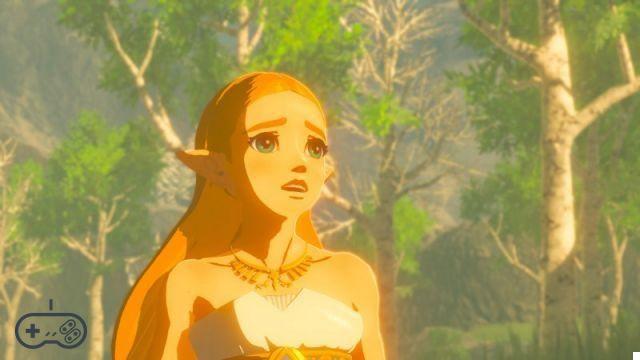
Dealing with a topic dear to many, namely the graphics, we immediately underline the second, undeniable defect of the game: slowdowns. They are never heavy or unbearable, but even if they are light they are still quite frequent: they occur mainly in coincidence with dynamic weather conditions (wind, heavy rain, storms) or in the presence of many contemporary events (enemies, explosions, various running horses) , and it's something Nintendo didn't get used to. The surprising thing is that they afflict Breath of the Wild only if inserted in the Dock, therefore at 900p, while in portable mode, at 720p, the whole adventure runs smoothly: we still recommend that you enjoy the work on the TV, if you can. From a stylistic point of view it is the most successful The Legend of Zelda since The Wind Waker: the inspiration to Hayao Miyazaki a is obvious, the less successful implementation of the model taken as a reference, but still valid enough to make Breath of the Wild soar, as a mere aspect, on many other open worlds with similar funding. The qualitative drops do not concern so much the characters, but some details of the setting that are not up to the situation: waterfalls and rocks in the first place. The soundtrack, to close the review, is valuable but extremely courageous: this game boasts some extraordinary pieces which, however, are constantly enslaved by the sound effects. The musical accompaniment during exploration is minimal, but still dynamic and capable of confirming the development of events, especially in the vicinity of enemies or particularly dangerous areas.
Comment
Resources4Gaming.com9.7
Readers (793)9.4
Your voteThere has never been such a dynamic adventure in such a large world, and there has never been such a large world so rich in adventure. Breath of the Wild, examined in its individual aspects, achieves absolute excellence in the control system, in environmental and physical variables, in game design and in the quality of the interaction, but it is the result of the sum of these components, as well as their internal declination, to make it a unique experience. The experiential approach to the game world, the necessary knowledge of the territory and the thoughtful planning of the journey, postulate a complexity extraneous to the open world dedicated to achieving the objective signaled by the radar. In addition to being a work capable of marking an entire decade, Breath of the Wild, through sound accompaniment and fauna, exalts an often overlooked virtue from video games: grace.
PRO
- Excellent environmental control and interaction system
- The physics engine and the meteorological variables make each route unique
- Cognitive approach to territorial morphology
- Exceptional fauna
- Meritorious artistic direction, given the context and the budget
- Long and surprisingly challenging
- When played from the Dock, slight but frequent drops in frame rate occur
- Little decorative vegetation




